New IA 2.0 is Felt’s fastest tri bike yet
Honed for Kona, there’s a host of neat integrations
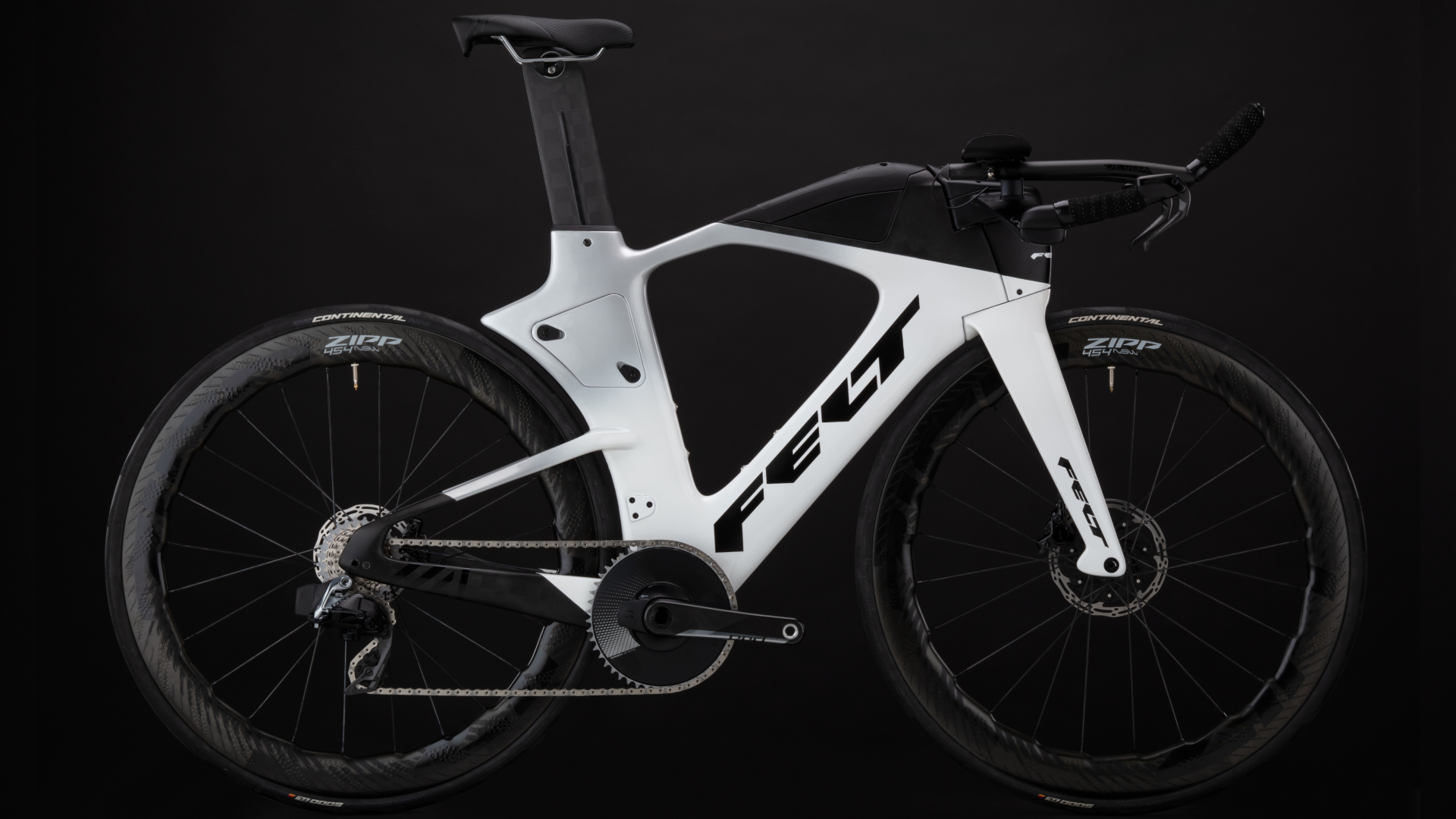

Felt has come back with a razor sharp vision after spending a little time in the wilderness. Quite the contrast to the brand’s recent release of its first carbon gravel bike, the new IA 2.0 tri bike is the latest chapter in a long history.
Having won multiple world triathlon championship titles on the women’s side over the last three decades, Felt wants that streak to continue into a fourth - as well as clinching some victories on the men’s side too.
With the IA 2.0's very distinctive profile, its field testing in competition has been a pretty badly kept secret - but the details where the bike is most interesting, so let’s take a look into that.
Felt IA 2.0 tri bike
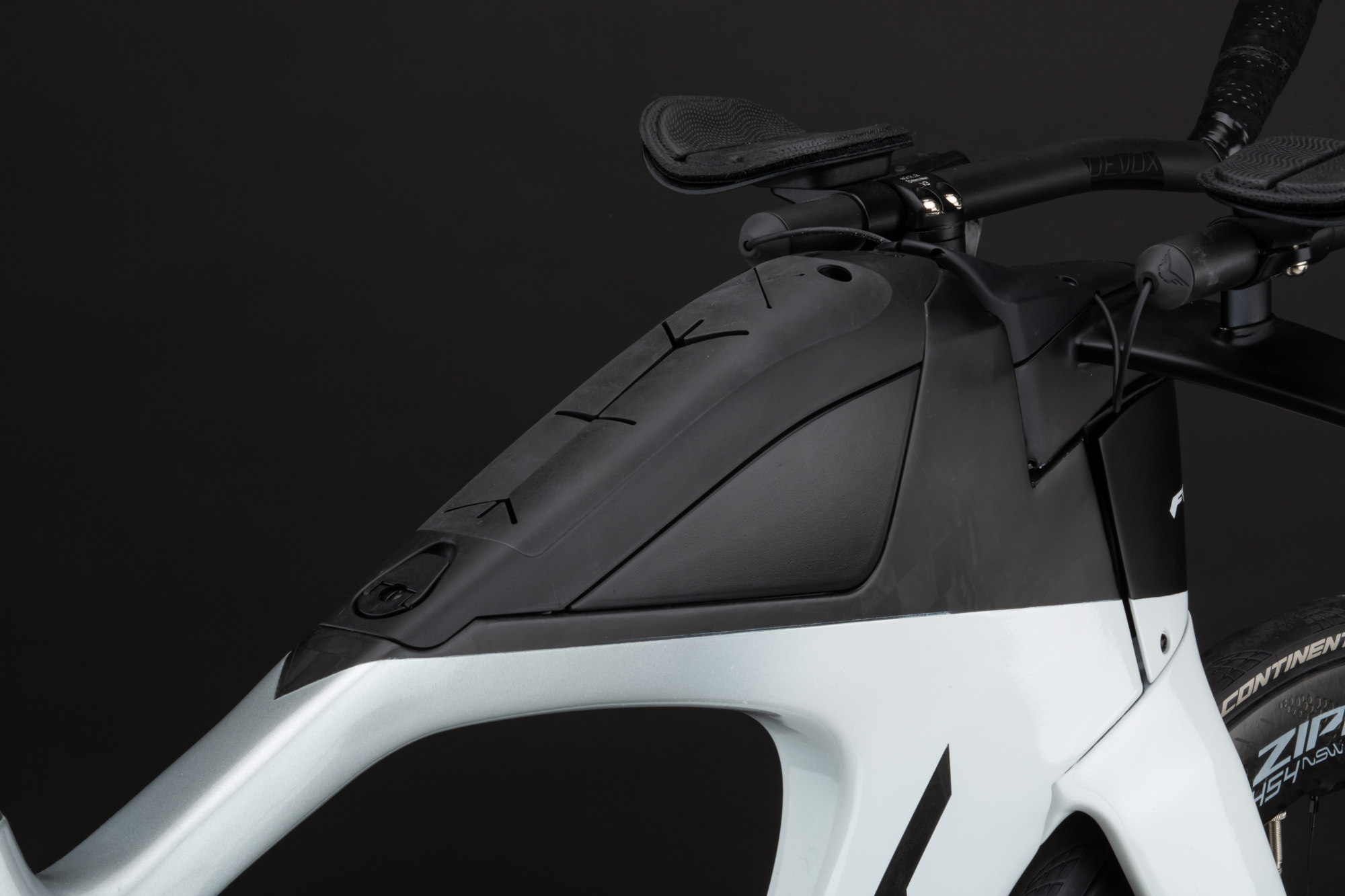
Starting with the aero optimisations, Felt’s time honing its designs in the wind tunnel are what guided that instantly recognisable profile, with the hump-back behind the head tube and that stubby arch over the rear wheel.
Some elements of frame design, such as the ever-dropped seat stays and deep section down tubes might be reaching something of a convergence between brands. But it is nice to see some more differentiating characteristics sometimes.
Surprisingly, the bike is optimised around a 28mm tyre, as Felt believes that makes for a total system that’s faster. Most tri bikes don’t optimise for tyres larger than 25mm.
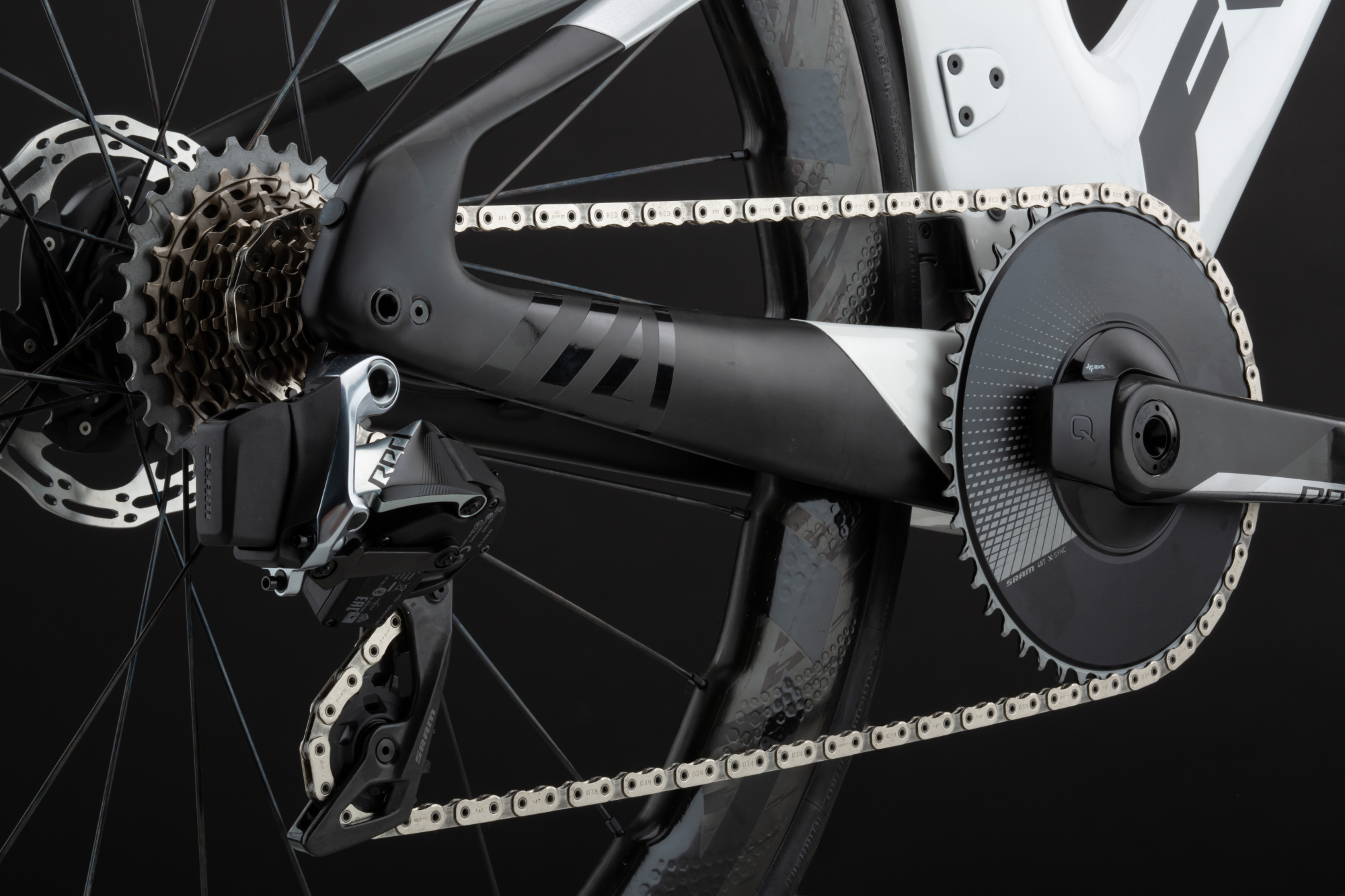
Along with the tube shapes, the IA 2.0 features a removable faceplate for a front derailleur, enabling a maximally aerodynamic 1x setup for flat courses. But should you wish, or if the route demands it, there is the option to swap in a double crankset as well as provision for using either mechanically or electronically actuated derailleurs.
The cockpit has been redesigned too, allowing for a greater range of adjustment for different body shapes and positions. Most notable is that the extensions can now be angled in a new plane, allowing for the ‘high-hands’ or ‘preying mantis’ position that has been adopted by so many of the fastest riders.
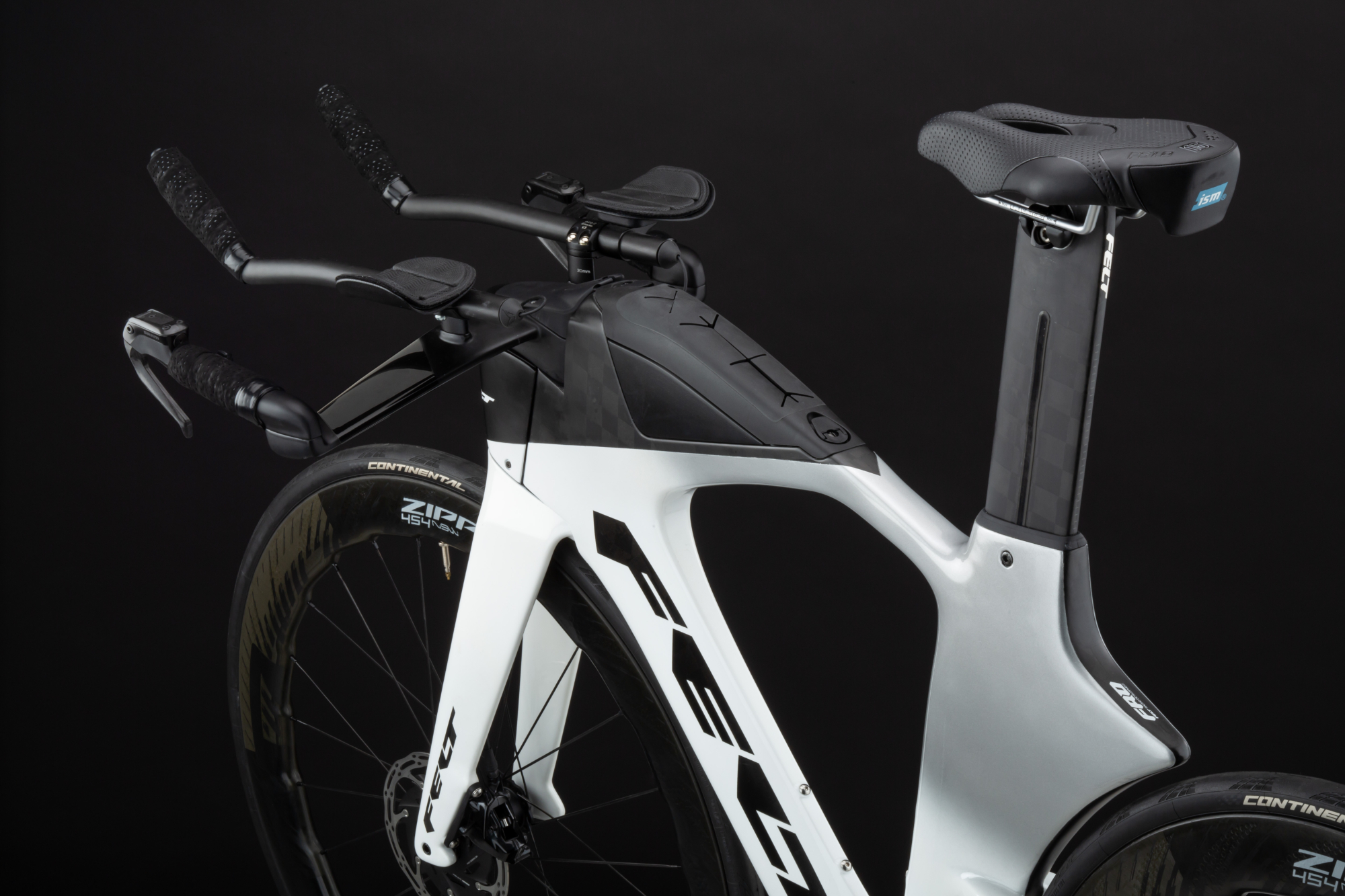
In all, the tweaks add up to a claims of being 4% faster at yaw angles between -12.5 and +12.5 degrees, compared to the previous model. Those yaw angles are selected because Felt’s calculations show that’s what triathletes tend to experience 90% of the time - on wider yaw angles the margin is smaller, being a claimed 1.9% faster.
In terms of the specific aspects for Ironman and long distance events, there is an integrated bento box in that huge top tube, as well as a reservoir for hydration. It has an open port for allowing you to dump a fresh bottle in with a few quick squeezes. There’s also a space in the seat tube for storing extra bits.
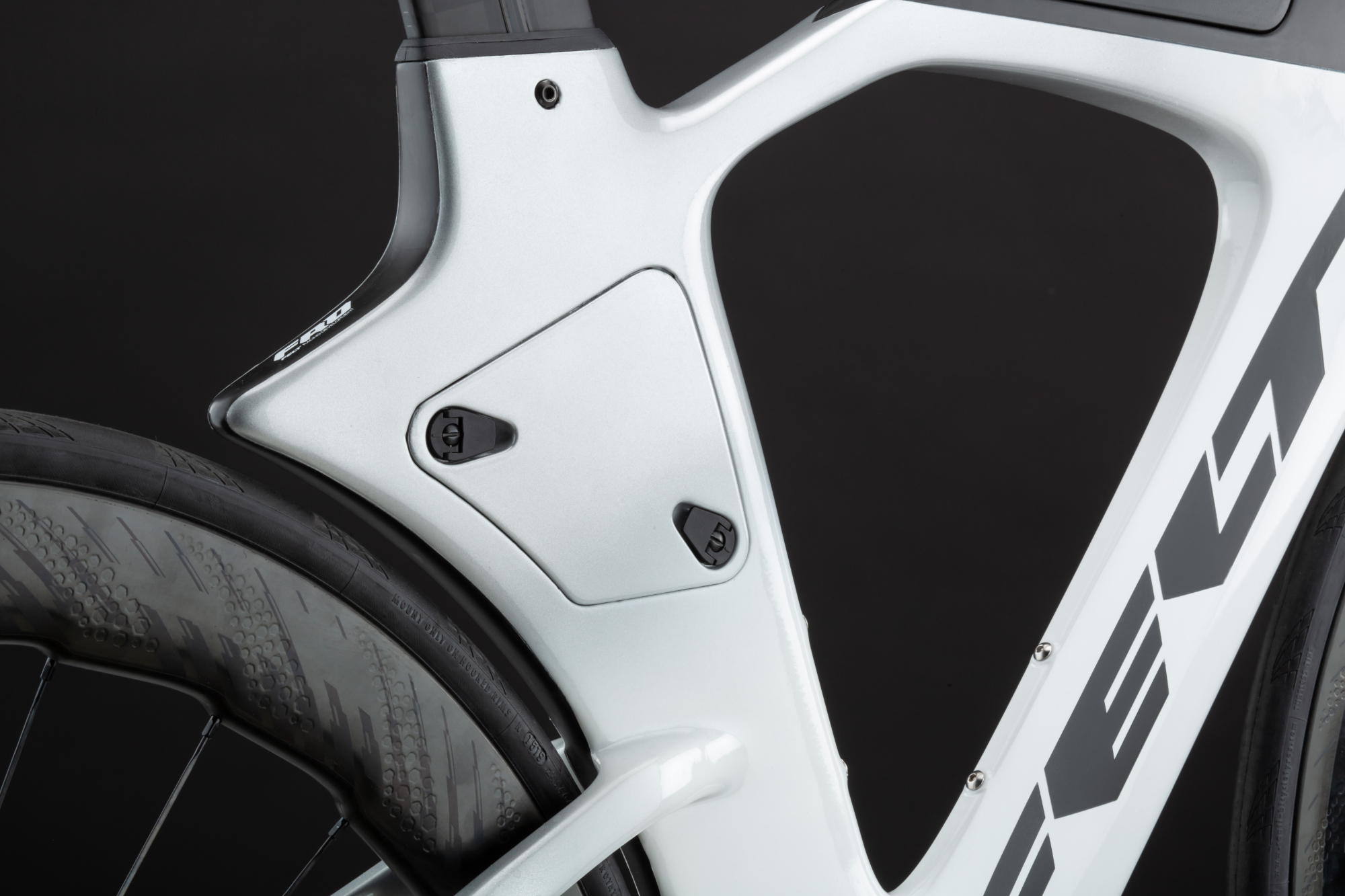
That super thick seat post might look pretty unforgiving, but it’s wrapped in a rubber sleeve just like the gravel bike’s seat post for a bit of extra compliance. The gravel bike will flex visibly, but we’ve yet to see to what degree this seat post will move.
Pricing begins at $10,050 / £8,999 for a Shimano Ultegra Di2 build and tops out at $17,050 / £13,499 for the 1x SRAM Red AXS build with Zipp 454 NSW wheels.

Thank you for reading 20 articles this month* Join now for unlimited access
Enjoy your first month for just £1 / $1 / €1
*Read 5 free articles per month without a subscription

Join now for unlimited access
Try first month for just £1 / $1 / €1
Get The Leadout Newsletter
The latest race content, interviews, features, reviews and expert buying guides, direct to your inbox!

After winning the 2019 National Single-Speed Cross-Country Mountain Biking Championships and claiming the plushie unicorn (true story), Stefan swapped the flat-bars for drop-bars and has never looked back.
Since then, he’s earnt his 2ⁿᵈ cat racing licence in his first season racing as a third, completed the South Downs Double in under 20 hours and Everested in under 12.
But his favourite rides are multiday bikepacking trips, with all the huge amount of cycling tech and long days spent exploring new roads and trails - as well as histories and cultures. Most recently, he’s spent two weeks riding from Budapest into the mountains of Slovakia.
Height: 177cm
Weight: 67–69kg
-
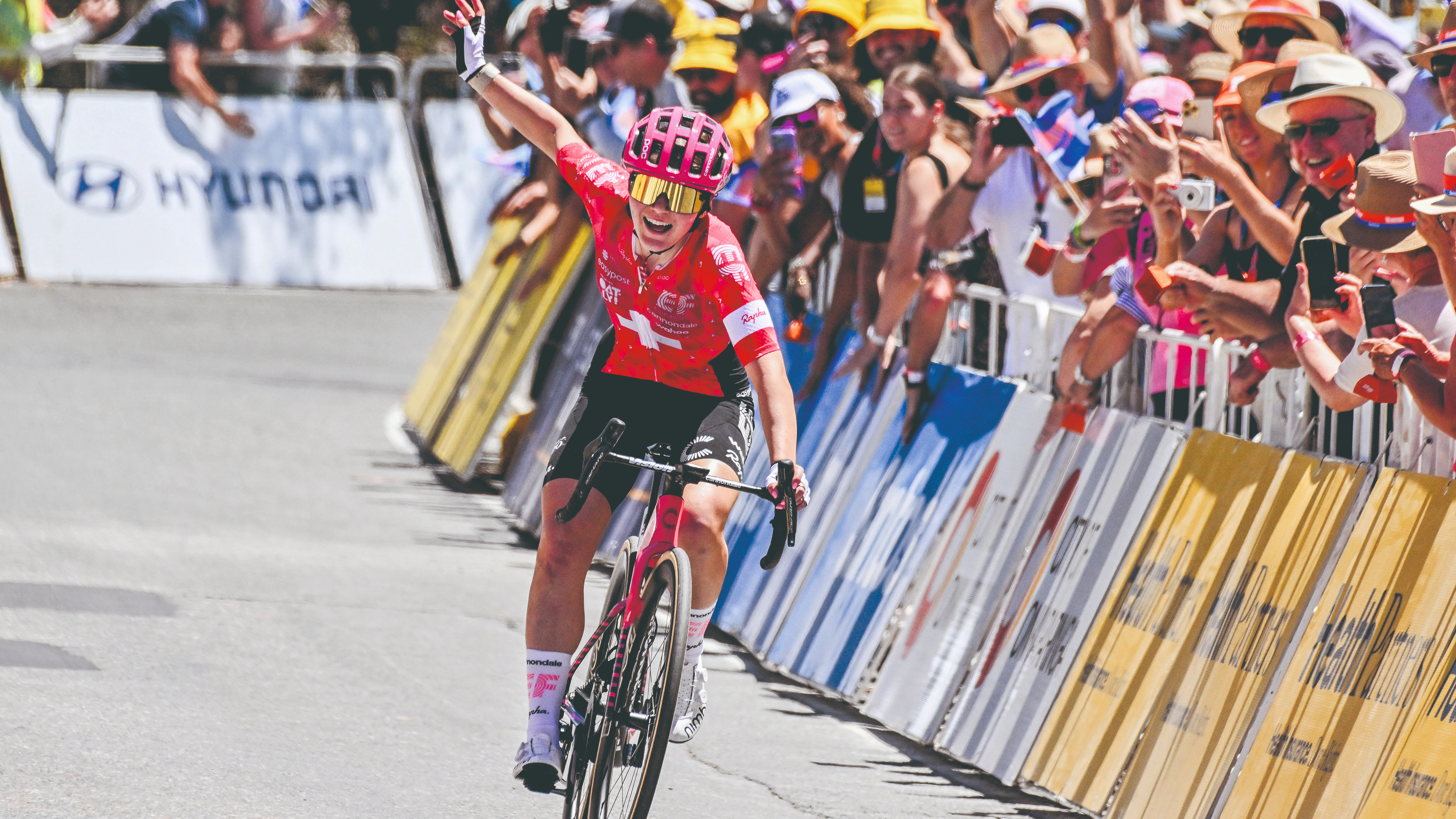 How do the pros train? Noemi Rüegg's 26 hour training week
How do the pros train? Noemi Rüegg's 26 hour training weekWinner of this year’s Tour Down Under, the EF Education-Oatly rider is a climber whose talent is taking her to the top
By Chris Marshall-Bell
-
 Save £42 on the same tyres that Mathieu Van de Poel won Paris-Roubaix on, this Easter weekend
Save £42 on the same tyres that Mathieu Van de Poel won Paris-Roubaix on, this Easter weekendDeals Its rare that Pirelli P-Zero Race TLR RS can be found on sale, and certainly not with a whopping 25% discount, grab a pair this weekend before they go...
By Matt Ischt-Barnard